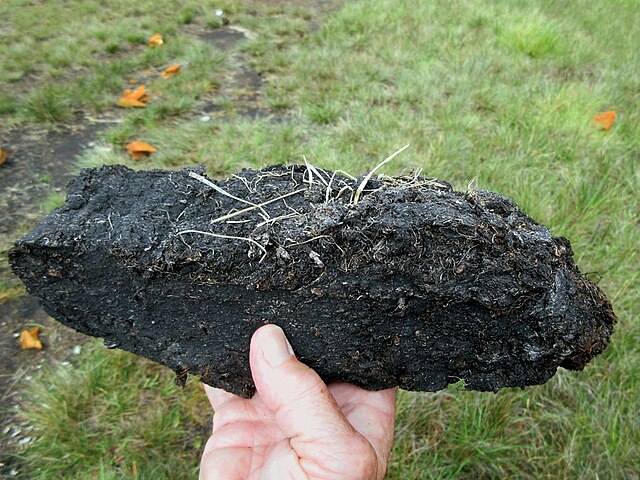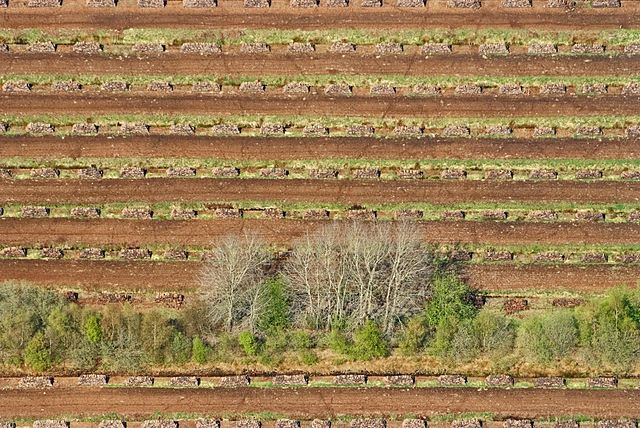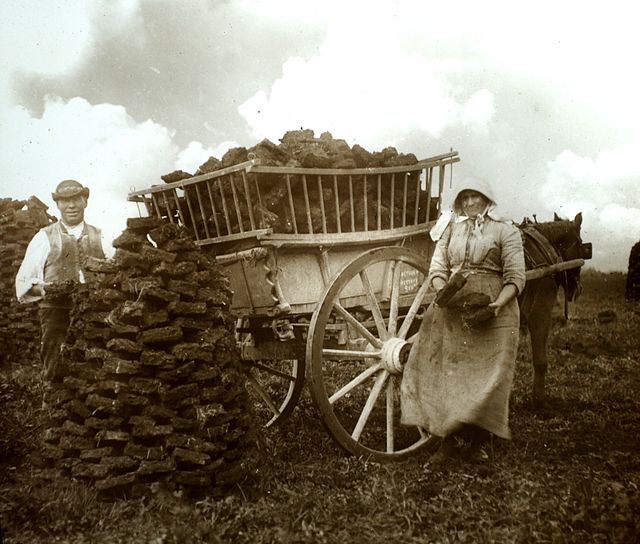Muskeg is a peat-forming ecosystem found in several northern climates, most commonly in Arctic and boreal areas. Muskeg is approximately synonymous with bog or peatland, and is a standard term in Western Canada and Alaska. The term became common in these areas because it is of Cree origin; maskek (ᒪᐢᑫᐠ) meaning "low-lying marsh".
Poplar growing on muskeg
Heavy equipment that has broken through thawing muskeg in Wabasca oil field, Alberta
Stunted shore pine growing on muskeg in Wrangell, Alaska
Tracked excavator placing corduroy on muskeg near Rocky Mountain House, Alberta
Peat is an accumulation of partially decayed vegetation or organic matter. It is unique to natural areas called peatlands, bogs, mires, moors, or muskegs. Sphagnum moss, also called peat moss, is one of the most common components in peat, although many other plants can contribute. The biological features of sphagnum mosses act to create a habitat aiding peat formation, a phenomenon termed 'habitat manipulation'. Soils consisting primarily of peat are known as histosols. Peat forms in wetland conditions, where flooding or stagnant water obstructs the flow of oxygen from the atmosphere, slowing the rate of decomposition. Peat properties such as organic matter content and saturated hydraulic conductivity can exhibit high spatial heterogeneity.
A lump of peat
Peat stacks in Südmoslesfehn (district of Oldenburg, Germany) in 2013
Peat gatherers at Westhay, Somerset Levels in 1905
Peat extraction in East Frisia, Germany








